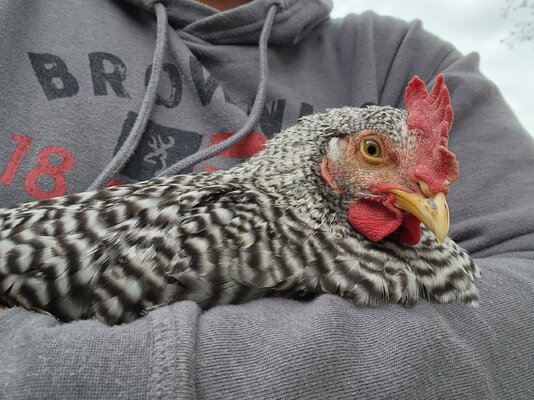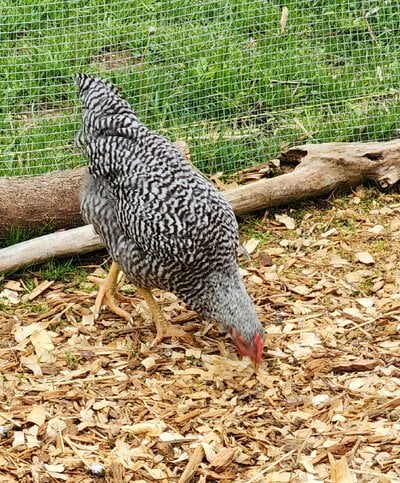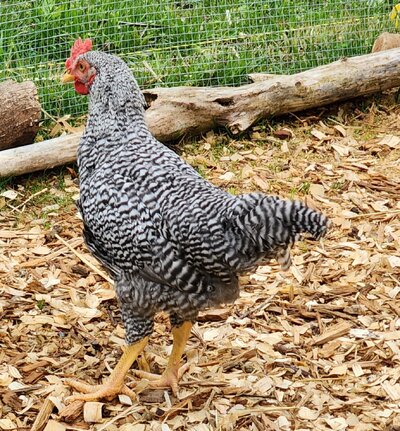Hedgeland Farms
Crowing
A friend surprised me with a cockerel. 

He looks like a barred rock. She said he's a Dominque but I thought those had rose combs. If he is Dominque, chances of him throwing a rose comb?? She said he could and that she wants a chick if he does. She said she saw dad and he also had a straight comb.
I think he's a barred rock since the person was also selling a pair of barred rocks. The person she got him from told her all of this info, and said rose combs are rare ....I don't think that's correct...
Just trying to figure out this lovely gift!
He looks like a barred rock. She said he's a Dominque but I thought those had rose combs. If he is Dominque, chances of him throwing a rose comb?? She said he could and that she wants a chick if he does. She said she saw dad and he also had a straight comb.
I think he's a barred rock since the person was also selling a pair of barred rocks. The person she got him from told her all of this info, and said rose combs are rare ....I don't think that's correct...
Just trying to figure out this lovely gift!






